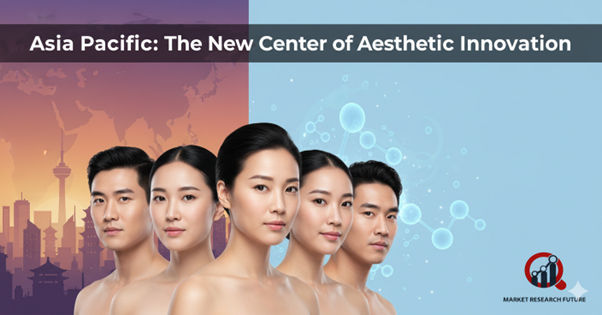Asia Pacific: The New Center of Aesthetic Innovation

Aesthetic Evolution: From Rare Treatments to a Worldwide Trend
The beauty industry has come a long way since it first started. In the late 20th century, cosmetic procedures were mostly limited to laser tattoo removal, hair removal, and minor skin resurfacing. These early methods set the stage for what would become one of the most active areas of modern health care.
The Asia Pacific region is now one of the fastest-growing markets for aesthetics, just five years later. The change is happening because people have more money to spend, beauty standards are changing, and people are becoming more open to cosmetic surgery. In big economies like Japan, South Korea, China, and India, what used to be a luxury is now a normal part of wellness and self-expression.
The modern aesthetic landscape in APAC is a mix of medical science, cutting-edge technology, and cultural sophistication. This gives people the freedom to define beauty on their own terms.
The Evolution of Aesthetic Treatments
Today's cosmetic procedures are very different from the invasive surgeries of the past. People are now more interested in non-surgical and minimally invasive methods that show results quickly and with less pain and downtime.
More and more men and women are getting procedures like injectables, skin tightening, laser therapy, and body contouring. Patients are choosing treatments that are safe, quick, and can be tailored to their needs. This has led to a rise in the number of dermatology clinics, medical spas, and aesthetic centers in the area.
In addition, cultural factors in the Asia Pacific region, where looks and self-care are closely linked to social and professional confidence, have been very important in making aesthetic improvement more common. It is no longer vain to want to look good; it is a choice of lifestyle.
Technology: The Big Change in Aesthetic Medicine
New technologies are always changing what is possible in the field of aesthetic medicine. The use of smart technologies has improved both safety and results. For example, high-precision laser systems and ultrasound-based tightening devices, as well as AI-driven skin analysis tools.
Neurotoxin applications, dermal fillers, and energy-based treatments have all improved, making aesthetic care easier to get, cheaper, and more effective. Treatments now need very little time off, look natural, and can be customized to work with different skin types found in the Asia Pacific region.
The introduction of next-generation biostimulators and personalized skincare products has also changed the way professionals deal with issues like aging, pigmentation, and texture. These new ideas, along with more people knowing about them, have made cosmetic procedures not only fix problems but also stop them from happening in the first place. This change fits well with the health-conscious mindset of today's consumers.
What are the things that are making the market grow?
There are a number of important things that are moving the Asia Pacific aesthetics industry forward:
- More Attention on Self-Image: The digital age, which is dominated by social media and virtual interactions, has made people want to feel better about themselves and look better.
- Growing Middle-Class Population: As economies in emerging markets like India, China, and Southeast Asia grow, aesthetic procedures become more affordable and popular.
- Medical Tourism: South Korea, Thailand, and Malaysia are now known around the world as places where you can get high-quality, low-cost cosmetic care.
- Preventive Aesthetics: More and more people are spending money on things like skin boosters and collagen therapy to keep signs of aging from showing up too soon.
- Technological Accessibility: New devices and materials are always being developed, which has made more treatment options available in both cities and suburbs.
All of these things have come together to make a strong ecosystem that encourages both innovation and large-scale use.
Regional Insights: Diversity Creates Opportunities
Every country in the Asia Pacific has its own strengths that help the aesthetic industry.
Japan is still a leader in new ideas and skin-friendly technologies that focus on natural beauty and treatments that are based on precision.
South Korea is still a leader in global beauty trends, especially when it comes to facial aesthetics and skin rejuvenation.
China has seen a huge increase in consumer interest and demand for cosmetic procedures, thanks to the country's growing healthcare system.
India is becoming a promising market because there are more and more skilled dermatologists, more people are using technology, and younger people are becoming more aware of beauty.
Australia and Southeast Asia are also seeing steady growth, thanks to a strong beauty culture and changing healthcare systems.
Because of this diversity, the Asia Pacific region is not only a market for aesthetic medicine but also a center of global influence.
The Future of Aesthetics in Asia Pacific: What Will Happen Next
Personalization and whole-body wellness are the future of beauty in Asia Pacific. People today want treatments that improve their natural beauty rather than change it.
In the next few years, AI diagnostics, 3D imaging, and regenerative technologies like stem cell-based rejuvenation and biocompatible fillers will work together more. Sustainability will also be a big part of the conversation, with eco-friendly products and ethical manufacturing becoming more popular among people who care about the environment.
The change in the industry from luxury to lifestyle is a sign of a bigger cultural shift, where improving your looks isn't about changing who you are, but about becoming the best version of yourself.
Last Thoughts
The Asia Pacific aesthetics market isn't just a success story for the region; it's an inspiration for the whole world. The area is shaping the future of beauty and health by combining medical precision, technological progress, and cultural sensitivity.
The aesthetics industry will keep changing the way people feel about themselves and their confidence, one treatment at a time, as art and innovation continue to mix.